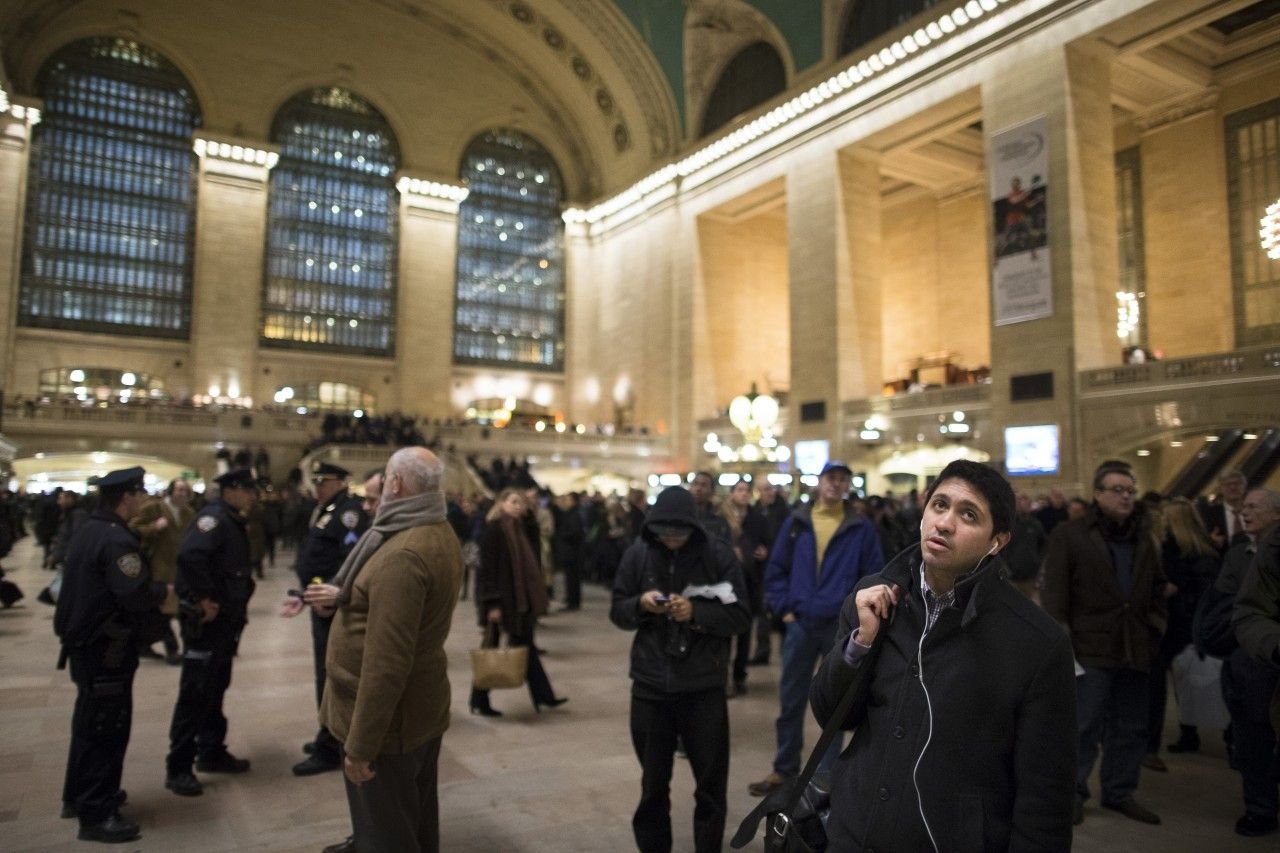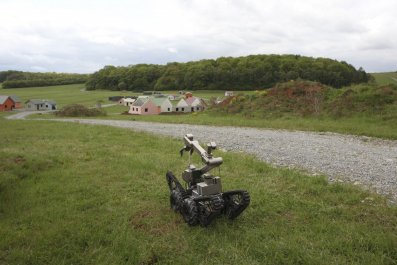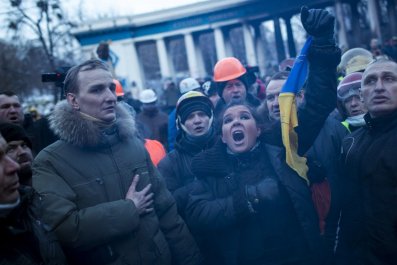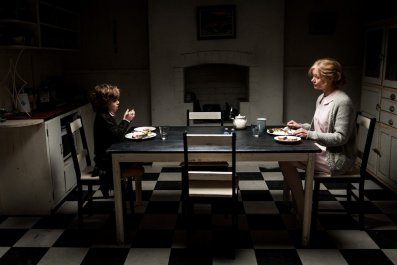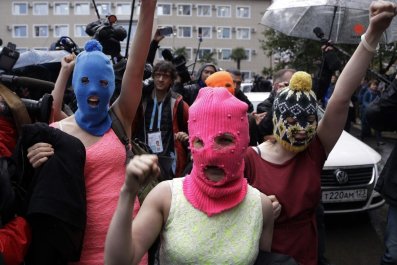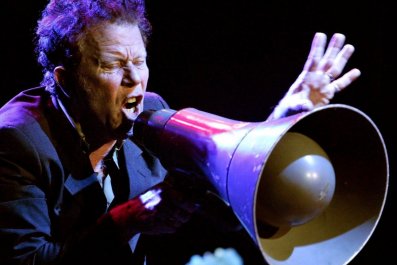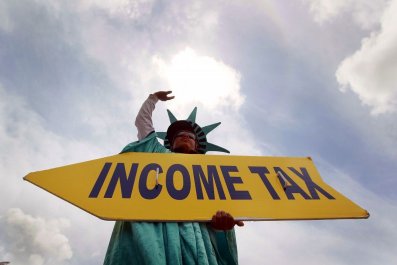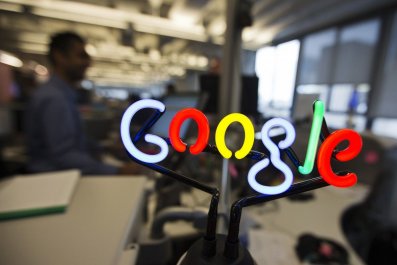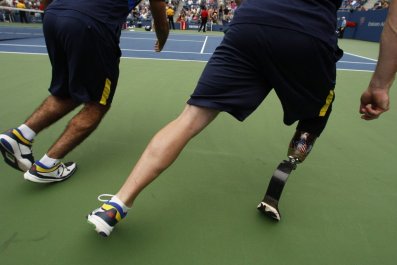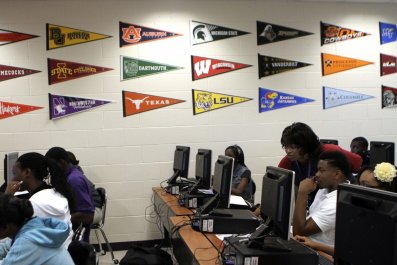Forget bankers, lawyers and advertising executives in Armani suits nestled up against chic publishing and creative types clutching iPads. On a particularly frigid morning last Friday in Connecticut, a packed commuter train stumbling its way to Manhattan was for some daily riders evocative of the last days of the Vietnam War.
That chaotic morning -- the number of trains on America's busiest stretch of rail were cut by 60 percent after a heavy snowstorm -- "the scene was like the fall of Saigon," recalls Tom Wilson, executive creative director at Geometry Global, a digital branding company, who commutes to Manhattan from tony Darien, Conn. "You had people standing on platforms for an hour, two hours. The doors would open at stops and people couldn't get on, the cars were so full. It was dangerous."
The high-profile trains, run by the state of New York entity Metro North Commuter Railroad, convey middle-class commuters but also a sizable chunk of the 1 percent, all along a 74-mile stretch between New Haven, Conn., and New York City -- to hedge funds in Connecticut and to global banks, consulting, design and advertising firms in Manhattan. But these days, the rail's increasingly delay-plagued service to one of the planet's largest metropolises seems less an odd contrast of Third World and First World and more a taste of Dante's Inferno. And federal regulators are taking notice.
"Honestly, it's gotten to the point where hitchhiking a ride to work with a serial killer seems like a more pleasant way to travel than commuting another day with Metro North," says Jim Byrne, communications manager at the The Calhoun School, an elite private school on Manhattan's Upper West Side. Laura Lamorte, a director at MacMillan publishers, says she has seen train floors plastered with silver duct tape, presumably covering holes and cracks. One rider last Friday tweeted that the train that morning was "a practice drill for fighting your way through zombie hordes."
Epic frustration and stress have reached an inflection point for the estimated 136,600 weekday riders on Metro-North's New Haven Line, the transportation lifeblood of America's monied and professional class living in Connecticut and working in New York (though some riders reverse commute to hedge funds in Greenwich and banks in Stamford). Long plagued by outdated cars, sketchy, aging tracks and accusations of mismanagement, the commuter rail has seen its dwindling reputation tarnished further in recent months by mishaps and delays, some lasting hours in freezing, unheated cars.
The trains traverse gritty Bridgeport before coasting through wealthy Connecticut towns like Greenwich, past multimillion-dollar estates in some of the nation's richest zip codes. But the rail system and its overhead electric catenary wire system - a tetchy tangle of wires dating to 1907 - are anything but pretty. The entire line needs $3.6 billion in urgent repairs, according to the Regional Plan Association, an independent think tank.
Trash and piles of metal parts line many tracks. Smelly cars dating to the 1970s shake passengers in stiff seats from side to side like livestock. Floors are perpetually grimy, and train cars are in short supply. Expensive equipment sits idle. "One day the toilet flooded and the water was just seeping into the vestibule," recalls Noelle Villanueva, a trader at First New York Securities who commutes from Fairfield, Conn., a large commuter town.
Engineers - the people driving the trains - occasionally "overshoot" their stops and, if the tracks allow it, have to back up, leaving commuters like Lamorte to wonder if the people behind the wheel are asleep, or drunk. Trains come in unannounced on the wrong platform, sending riders to scamper like voles across crumbling overhead passageways to the correct platform. A 117-year-old bridge spanning the Norwalk River, in Norwalk, Conn., sports gaping holes beside the tracks. "They have a rescue boat, but the guy's usually 1,000 feet away, fishing, so you'll be dead by the time he gets to you," says Bill, an ironworker for Metro-North. (He declined to give his last name, citing a fear of retaliation.)
Jim Cameron, a former NBC news anchor and now a communications consultant, says that if highways were in a similar state, "you'd see the National F*****g Guard out here." Cameron, who commutes to New York from Darien, calls Metro-North "Tinker Toy-like" compared to European and Asian rail systems.
A long-delayed fleet of new, red Japanese cars has a glitch that causes them to short out when snow is swept up into their insides underneath, a phenomenon commuters call 'toaster in a bathtub'. "Even with the new cars, it's a little bit of a rickety ride," says Eric Altmann, who as head of Merchant Banking USA at ABN-Amro, a global Dutch bank, commutes to Manhattan from his home in Greenwich.
The train line is one of five main branches run by Metro-North (two others traverse Harlem and areas north of the Hudson River, including towns made famous by the Hudson River valley school of painters.) Metro-North itself is run by the Metropolitan Transportation Authority (MTA), a New York government agency. While other branches have their share of problems, it is the New Haven line, spanning New Haven and New York, that has wealthy commuters ready to riot.
Wilson, who tweets about the train's travails under the handle @MetroFingNorth, with a picture of an "oh, noooo!" Thomas the Tank Engine shooting off the rails, is part of a growing group of irritated riders who say their professional and personal lives are being stretched to the brink. When the trains are running normally, daily commutes to Manhattan from towns like Fairfield can still total three and a half hours or more, round trip door-to-door. Now, amid frequent delays of anywhere from 10 minutes to an hour or more, people are missing conference calls, client meetings and their kids' evening basketball games. "We're not customers - we're animals!" bellowed Neal Edelson, a lawyer from the Greens Farms neighborhood, who commutes into Manhattan, at a meeting with railroad and state officials Tuesday night in Southport, Conn.
As John Kesich, Metro-North's senior vice president of operations, told commuters at the meeting there's "one thing that's true - we do care," the irate 150-member audience shouted "No way!" and "Prove it!" as armed police officers stood watch. Villanueva, a Swiss national who for years rode a Swiss commuter rail daily into Zurich, calls the Swiss system "a million times better. It's clean, reliable and punctual."
"I know we have a lot of unhappy commuters," Connecticut Transportation Commissioner James Redeker said to the audience. After the meeting, he told Newsweek, "There's been 25 years of neglect, and we're trying to catch up."
Last December, the Federal Railroad Administration began a 60-day review of the railroad's safety and compliance practices. On Monday, Connecticut governor Dannel Malloy told Metro-North executives in Hartford that the system needed to "get its act together." The National Transportation Safety Board is scrutinizing the system after a series of headline-making accidents, including one that recently killed four people. On Wednesday, the board released an early report saying that the rail line needed more speed signs along its tracks. The report, part of an ongoing investigation, comes after a December 1 accident on Metro-North's Hudson line, in which a train derailed in the Bronx on a Sunday morning, killing four people and injuring dozens. The engineer had been driving 83 mph into a sharp curve designed to take a train going only 30 mph.
Commuters are increasingly wondering when someone else might die. Late last July, as temperatures soared near 100 degrees, a train near Westport broke down in the afternoon, leaving passengers, including several pregnant women, trapped in unairconditioned cars whose doors and windows would not open. Cameron says that passengers became so desperate that they called 911. So did Metro-North officials, though Westport fire department officials issued a statement the next day saying that train officials initially told them not to worry because there were no passengers on board.
The lack of communication - think digital signs at stations that almost uniformly announce "Good service" - irks riders, some of whom pay $400 a month and more. "Sometimes I don't think the engineers know what's going on," says Lamorte, citing disconnects between Metro-North's status tweets and what the engineers announce, or don't announce, on board.
Ugly though they are, the recent delays in what Cameron calls the train's "winter of discontent" aren't as bad as it can get.
Last January 28, a Metro-North coach cleaner was arrested after a pregnant female passenger traveling to New Haven reported that she awoke to find him masturbating and ejaculating on her during an early morning train from Grand Central Terminal, the rail's flagship station in New York. In a jab, Wilson tweeted last Monday that he was taking the work day off but in honor of commuters would ride a train between New Haven and Grand Central "in a clown suit" performing a lewd act upon himself "vigorously."
On January 23, Metro-North trains traveling across New York and Connecticut were stopped dead in their tracks at the evening rush hour after a clueless technician in the railway's control hub in Grand Central Station pulled a plug out of a socket. Some passengers sat for two hours in unheated cars in freezing temperatures, while others swirled about inside the stately Grand Central like a giant bait ball about to be devoured by sharks.
Last May, two Metro-North trains collided in Fairfield during a Friday evening rush-hour commute, after one train derailed and slammed into an oncoming train. Dozens were injured, and full train service for commuters from the affluent Connecticut town did not resume for another five days.
After Hurricane Sandy, in October 2012, and Hurricane Irene, in August 2011, knocked out power for weeks in Connecticut, scores of Connecticut commuters worked from laptops in local coffee shops after trains were cancelled for weeks. "It has been a difficult period of time for Metro-North, there's no question about that," says MTA spokesman Aaron Donovan from the agency's New York office. "We are hoping to be able to win back the trust of our customers and restore the high quality of service that they have traditionally been accustomed to."
So why even bother to ride the train? Driving to New York is unpredictable; parking in Manhattan is extremely limited and very expensive. Many commuters work on the train but can't while negotiating speeding 18-wheelers and toll booths. The train is "the only game in town," says Cameron, who also runs a commuter advocacy organization, The Commuter Action Group.
Wilson says other parts of the country, and the world, can argue that Metro-North's travails are merely "a First World problem. A white man's problem." But he adds that "a commuter rail serving one of the wealthiest riderships to one of most important metropolises in the world" should be doing better. "Commuters have become zombie-like," he says. "They simply have no idea what time they're going to get to work - or if they're going to arrive home."
This article has been corrected to reflect that a meeting between Metro-North and state officials on February 18 took place in Southport, Conn.



